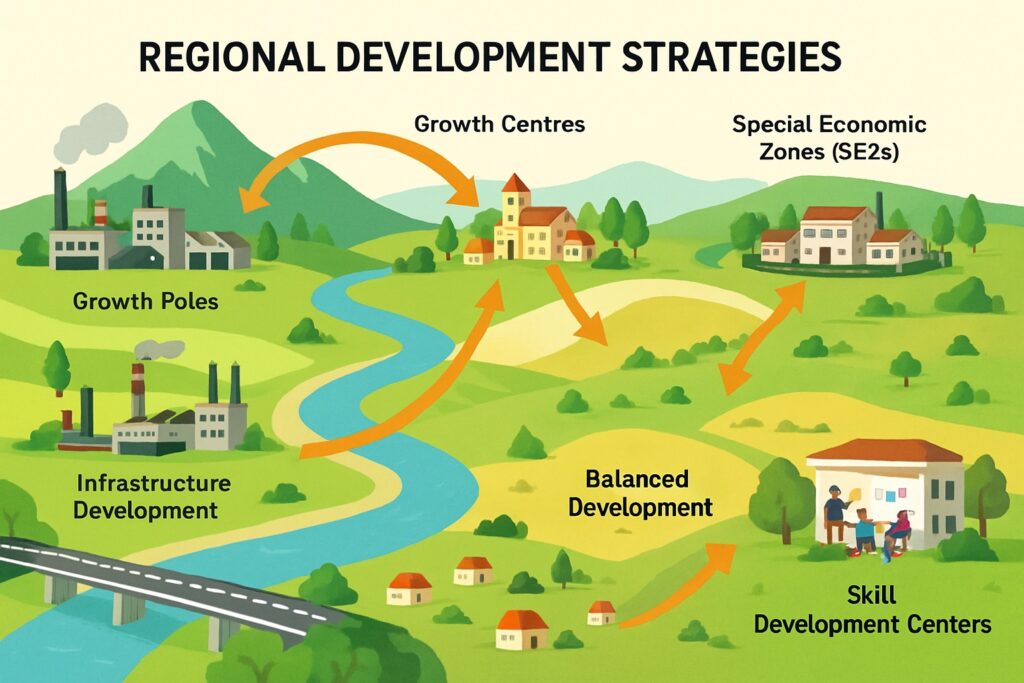Regional development strategies are plans and policies designed to promote economic growth and improve living standards in specific geographic regions. These strategies typically involve a range of initiatives, such as investments in infrastructure, support for local businesses, and workforce development programs.

There are several key elements to an effective regional development strategy
- Understanding the region’s strengths and weaknesses: Before developing a strategy, it’s important to understand the unique characteristics of the region, such as its economic base, demographic trends, and infrastructure. This information can help identify areas of opportunity and areas that need improvement.
- Stakeholder engagement: Successful regional development strategies involve engaging a wide range of stakeholders, including local government, businesses, community groups, and residents. Collaboration and participation from all these groups can help build momentum and support for the strategy.
- Diversifying the economy: A strong regional development strategy should aim to diversify the local economy, rather than relying on a single industry or employer. This can help create resilience and long-term growth.
- Investment in infrastructure: Infrastructure investments, such as transportation, broadband, and utilities, can help attract businesses and create jobs. These investments can also improve the quality of life for residents.
- Workforce development: A regional development strategy should include initiatives to support workforce development, such as training programs, apprenticeships, and education partnerships. This can help ensure that the local workforce has the skills and knowledge needed to succeed in the current job market.
- Sustainability: An effective regional development strategy should take into account the need for sustainable development practices, including reducing carbon emissions, protecting natural resources, and promoting social equity.
Overall, a successful regional development strategy should be tailored to the unique characteristics of the region and involve a wide range of stakeholders working together towards a common goal. By focusing on key elements such as diversifying the economy, investing in infrastructure, and promoting workforce development, regions can create opportunities for growth and improve the quality of life for residents.
Read: Geography Notes